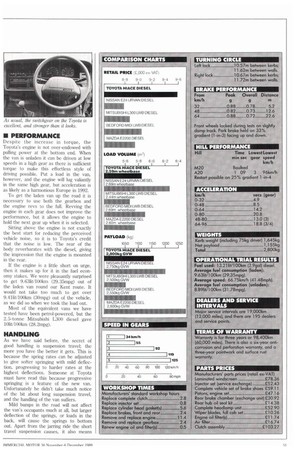• PERFORMANCE
Page 53

If you've noticed an error in this article please click here to report it so we can fix it.
Despite the increase in torque, the Toyota's engine is not over-endowed with pulling power at the bottom end. When the van is unladen it can be driven at low speeds in a high gear as there is sufficient torque to make this effortless style of driving possible. Put a load in the van, however, and the engine will lug valiantly in the same high gear, but acceleration is as likely as a harmonious Europe in 1992.
To get the laden van up the road it is necessary to use both the gearbox and the engine revs to the full. Revving the engine in each gear does not improve the performance, but it allows the engine to hold the next gear up when it is selected.
Sitting above the engine is not exactly the best start for reducing the perceived vehicle noise, so it is to Toyota's credit that the noise is low. The rear of the body reverbarates with the diesel, giving the impression that the engine is mounted in the rear.
If the engine is a little short on urge, then it makes up for it in the fuel econ omy stakes. We were pleasantly surprised to get 9.63lit./100km (29.35mpg) out of the laden van round our Kent route. It would not take too much to get over 9.41lit/1001un (30mpg) out of the vehicle, as we did so when we took the load out.
Most of the equivalent vans we have tested have been petrol-powered, but the 2.5-tonne Mitsubishi L300 diesel gave I Olit1100km (28. 2mpg).
















































































































